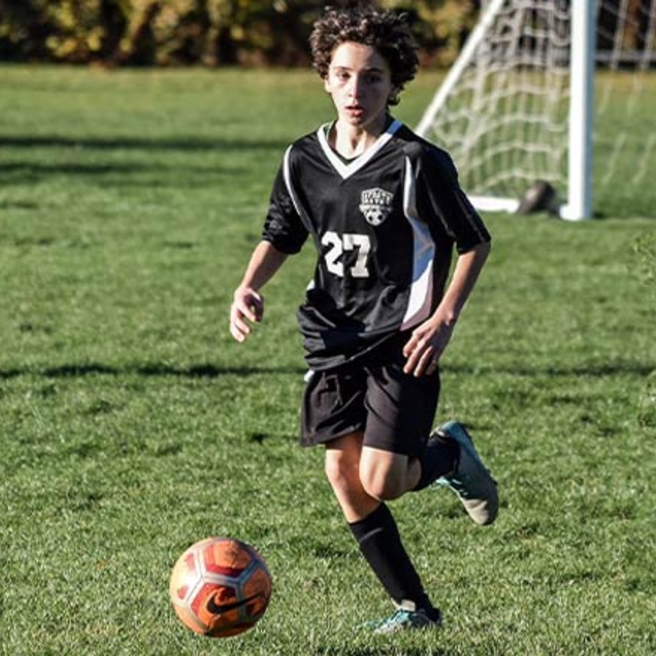What is coarctation of the aorta?
The aorta is the main artery that carries oxygenated blood out of the heart to the body. It starts at the left ventricle of the heart as one large vessel and branches out into the smaller blood vessels of the body. Arteries that deliver blood to the head, arms and other parts of the upper body branch off from the upper, ascending aortic arch. Arteries that deliver blood to the abdomen, legs and other parts of the lower body branch off from the lower, descending aorta.
With coarctation of the aorta in children, the portion of the aorta just after the upper-body arteries branch off is too narrow; this results in reduced blood flow to the lower body.
Because of this narrowing, the left ventricle of the heart must pump much harder than normal to move blood through the aorta to the lower body. This can lead to damage to the heart (heart failure) and high blood pressure in the heart and brain. It can also damage the organs in the lower body that don't get enough blood.
Sometimes children with coarctation of the aorta can also have a ventricular septal defect, a hole between the lower chambers of the heart, or a bicuspid aortic valve, which means the valve has two leaflets (or flaps) instead of three.
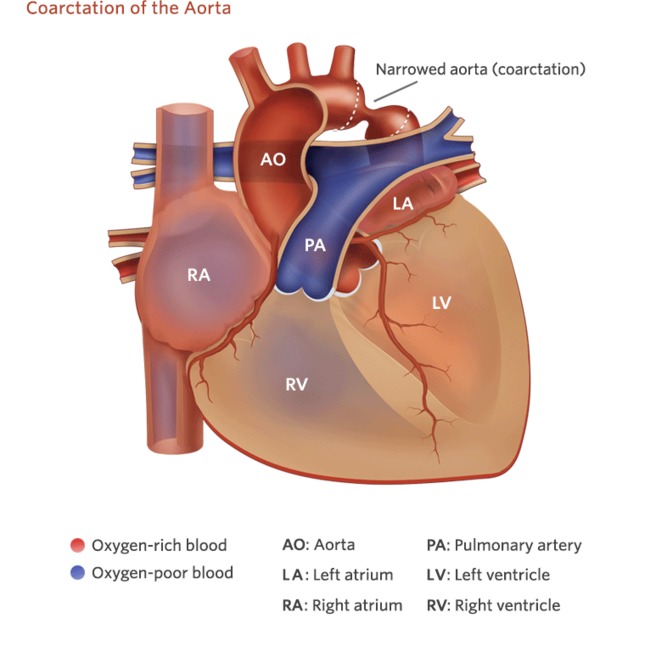
What are the signs and symptoms of coarctation of the aorta?
In severe cases, coarctation of the aorta symptoms will appear within the first few days of life. The more the aorta is narrowed, the more severe the symptoms will be.
In infants where the coarctation of the aorta is severe or moderate, symptoms can include:
- Labored or rapid breathing
- Weak femoral artery pulse (taken in the groin area)
- Heavy sweating
- Poor growth
- Pale or gray appearance
- Heart murmur: extra heart sound heard when the doctor listens with a stethoscope
If the narrowing is mild, coarctation of the aorta symptoms may go unnoticed until the child is older or even an adult. In those cases, symptoms can include:
- High blood pressure
- Cold feet or legs
- Difficulty exercising (gets out of breath quickly)
- Dizziness
- Fainting
- Nosebleeds
- Headaches
- Leg cramps
- Heart murmur
How is coarctation of the aorta diagnosed in children?
If your infant has severe coarctation of the aorta, in most cases a doctor in the birth hospital will notice symptoms. Once your baby arrives at CHOP, we will care for your child in the Evelyn and Daniel M. Tabas Cardiac Intensive Care Unit (CICU), where they will receive round-the-clock attention from a team of dedicated cardiac critical care medicine specialists.
Milder cases of coarctation of the aorta sometimes aren't diagnosed until the child is older. Pediatricians refer children to the Cardiac Center at Children's Hospital for evaluation after parents notice symptoms, or if the child has high blood pressure.
Diagnosis of coarctation of the aorta may require some or all of these tests:
- Echocardiogram : sound waves create an image of the heart
- Electrocardiogram (ECG): a record of the electrical activity of the heart
- Chest X-ray
- Pulse oximetry: a noninvasive way to monitor the oxygen content of the blood
- Cardiac catheterization : in which a thin tube is inserted into the heart through a vein and/or artery in the leg which makes measurements throughout the heart
- Cardiac MRI : a three-dimensional image shows the heart's abnormalities
What are the treatment options for coarctation of the aorta?
Coarctation of the aorta may require either cardiac catheterization or open heart surgery, depending on the severity of the narrowing and on other factors such as your child's age and overall health.
Surgeons can remove the narrowed section of the aorta and then sew the ends of the aorta back together, or they can enlarge the aorta with a patch.
During cardiac catheterization, a cardiologist will thread a thin tube (catheter) with a balloon on the end of it through an artery in the leg up to the heart. Then, using the catheter, the cardiologist can inflate the balloon in the narrowed section of the aorta to stretch it. He or she might also place a stent, or a stiff metal cage, to keep it open.
Your child will recover from these procedures in the Cardiac Intensive Care Unit at Children's Hospital of Philadelphia.
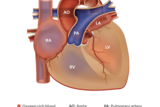
Coarctation of the Aorta repair - Part 2
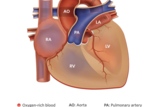
Coarctation of the Aorta repair - Part 3
Outlook
Because of enormous strides in medicine and technology, most children born with coarctation of the aorta go on to lead productive lives as adults.
What is the follow-up care for coarctation of the aorta?
Early years (0-5 years)
As a group, children with complex congenital heart defects who have had open heart surgery as infants are at a higher risk for neurodevelopmental issues when compared to children without congenital heart defects. The Cardiac Center at CHOP created the Cardiac Kids Developmental Follow-up Program to provide evaluation, screening and clinical care for children with complex congenital heart disease who are at risk for neurodevelopmental problems.
Through age 18
Most children who have repair of coarctation of the aorta recover completely and won't require additional procedures. Occasionally, the aorta becomes narrow again and balloon catheterization or surgery will be required.
Into adulthood
It is important that children born with coarctation of the aorta continue to see a cardiologist. We will help patients transition care to a qualified adult cardiologist
The Philadelphia Adult Congenital Heart Center, a joint program of Children's Hospital of Philadelphia and Penn Medicine, meets the unique needs of adults who were born with heart defects.
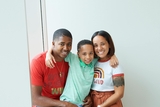
Patient Outcomes at the Cardiac Center
Children’s Hospital of Philadelphia's pediatric heart surgery survival rates are among the best in the nation.
Resources to help
Cardiac Center Resources
We know that caring for a child with a heart condition can be stressful. To help you find answers to your questions – either before or after visiting the Cardiac Center – we’ve created this list of educational health resources.
Reviewed by Stephanie Fuller, MD
Reviewed on 10/17/2024

